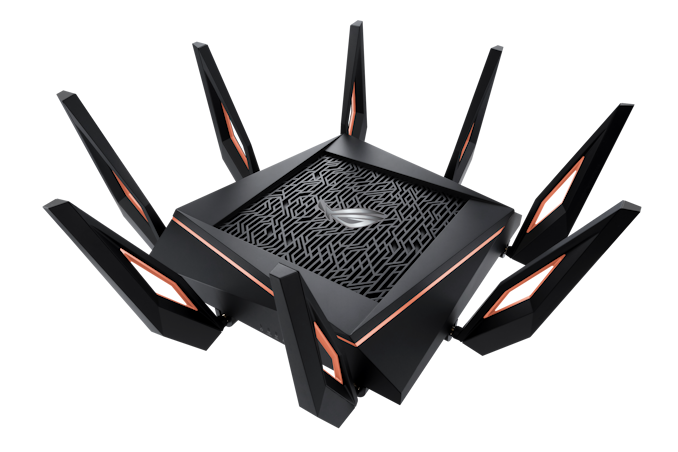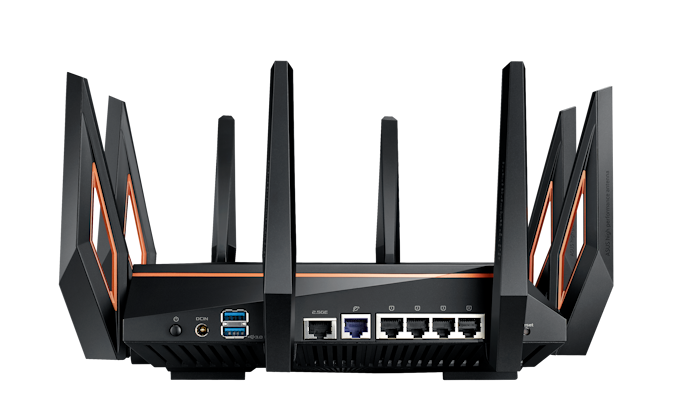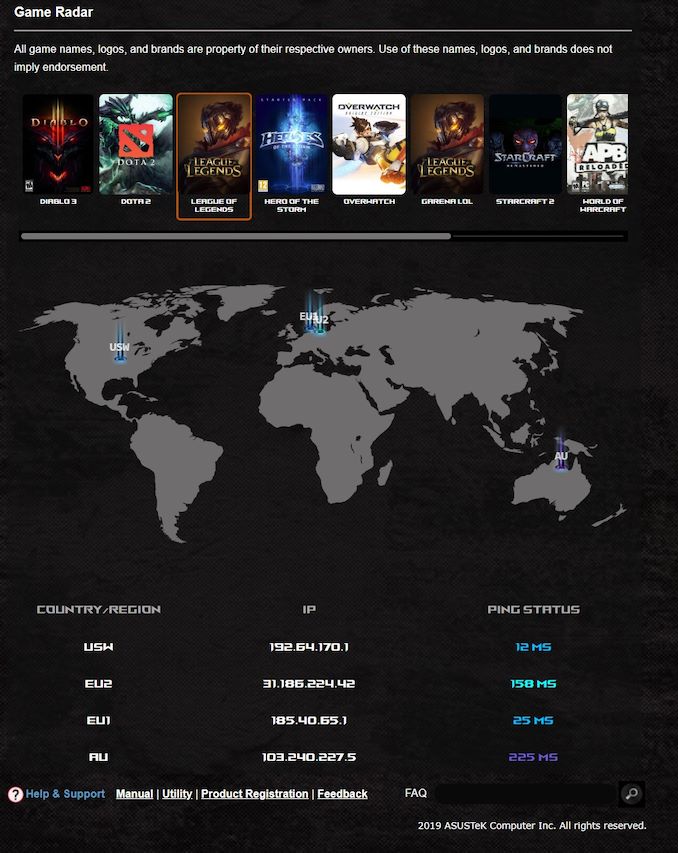AT 101: Wi-Fi 6 And Why You Want It
by Brett Howse on February 12, 2020 8:00 AM ESTThe 2020 AnandTech Wi-Fi Test Bed
We’ve been comfortably using Wi-Fi 5 for some time now, and it is only in the last several months that laptops have been shipping with Wi-Fi 6 based networking, mostly thanks to Intel’s Project Athena which has a requirement of the Intel AX200 Wi-Fi module, which is Intel's first Wi-Fi 6 based module on the market. Previously almost all shipping laptop computers offered Wi-Fi 5, and even a few with the latest Intel wireless adapters such as the Wireless-AC 9260 offered the advanced Wi-Fi 5 options such as 160 Mhz channel width, and MU-MIMO, so its nice to see a move to a new standard which includes these benefits across the board.
Although there are now quite a few Wi-Fi 6 routers and access points on the market, we had some specific criteria to meet. The router had to support Wi-Fi 6, and the 160 MHz channels, but because we are testing for performance, and not for capacity, we need an access point with a multi-Gigabit Ethernet connection. A typical laptop with a 2x2:2 network connection will be connecting to the access point at 2.4 Gbps, so transferring files from Ethernet over Gigabit will be a bottleneck. This does limit the selection somewhat.
After evaluating several models, we decided on the ASUS ROG Rapture GT-AX11000. The name is a mouthful, but meets all of our criteria and more. Most importantly, it offers the coveted 2.5 GbE port.
The ASUS ROG Rapture GT-AX11000
As the name implies, this router from ASUS can support up to 11000 Mbps over wireless, thanks to the 4x4 2.4 GHz, offering 1148 Mbps, and the two 4x4 5 GHz networks each offering 4804 Mbps. This adds up to just under 11000 Mbps, although with wireless the maximum connection speed is pretty much impossible to achieve. With the two separate 5 GHz networks, you can easily split off your consumption devices with higher priority devices, reducing interference on each network.
On the Wide Area Network (WAN) side there is a single 1 Gbps connection, and on the Local Area Network (LAN) side there are four 1 GbE and the single 2.5 GbE connection.
This router is built for capacity, with eight external antennae, and being a gaming router it also offers plenty of RGB lighting options. For those that don’t need the lighting, it can be turned off. ASUS also some tools to change the priority of gaming packets to reduce latency, assuming your network is that busy, and specifically prioritizes traffic from other ROG devices to make setup as easy as possible. ASUS even includes a utility to ping the various game servers for popular multiplayer games to provide you a map of latency to each one.
The GT-AX11000 also integrates with the ASUS AiMesh networking equipment to provide a whole-home mesh network, if even a router of this size can’t cover the entire house, either due to size or building materials blocking the signal.
For testing, the router is used in the access point mode, with the LAN connecting being over the 1 Gbps Ethernet, and a server connected directly to the router in the 2.5 Gbps port.













149 Comments
View All Comments
Gonemad - Friday, February 14, 2020 - link
Nah. I just decided to get my home cabled. When the wireless get faster than the cables, I will consider it.Very few devices stuck with wifi 4 or 3, for example my aging PS3. I got it cabled. Great blu-ray and netflix player.
Gonemad - Friday, February 14, 2020 - link
Cabling my home was more cost-effective for aging gear. New gear will demand a new router, eventually.Gigaplex - Monday, February 17, 2020 - link
Looking at the table that defines the max speeds of the various versions, I'm a bit disappointed that my 2x2 AC wifi can only get ~100Mbit 2 metres away with direct line of sight. It's only off by an order of magnitude...zepi - Monday, February 17, 2020 - link
What is your test device actually? You talk of ”typical laptop 2x2” etc. But please write out what exactly.I already have 3x3 AP + laptop for AC with 80MHz. Actually many people do.
azazel1024 - Wednesday, February 19, 2020 - link
That isn't disappointing for 2.4GHz performance, that sounds like something is wrong, like it is fat channel intolerant enabled or something similar. I'd trouble shoot more or talk to Intel on what's wrong.By comparison older 802.11ac Intel network cards (7260, 7265) on 2.4GHz 40Mhz 2:2 I can generally get around 200-215Mbps. Which is well over double the performance that you are seeing with the AX200 Intel card. That to me says either something is dropping it down to 20Mhz (which still isn't a strong showing, even for 20Mhz), or else there is some kind of bug in the firmware. I'd expect better than 802.11ac/802.11n performance in the 2.4Ghz space. Like around 240-280Mbps because of the higher QAM encoding.
Schumway7 - Saturday, February 22, 2020 - link
Can I upgrade my current wi-fi with new WIFI 6 or need a new service,with a new bill?FXi - Wednesday, February 26, 2020 - link
At this point in time I think most will be well served to wait for Wifi 6e. Clients should be coming along right now and the added channels that "e" will make available really give Wifi 6 the room to deliver on the speed increases.0ldman79 - Tuesday, March 10, 2020 - link
Isn't -21dB overdriving the receiver?I find typically anything stronger than a -40 has worse performance.
Also another client radio may give better results. I've found Intel to be quite problematic in the past. Qualcomm Atheros, Realtek or Broadcom have generally performed better than Intel, though you have to test with what is available.
pirspamela90 - Tuesday, December 15, 2020 - link
Very original and specific model but thank you for your review.